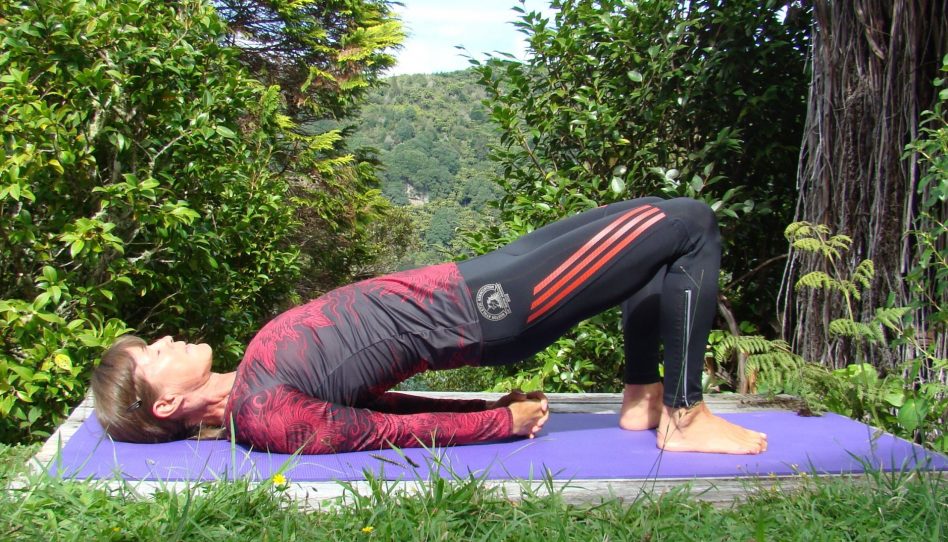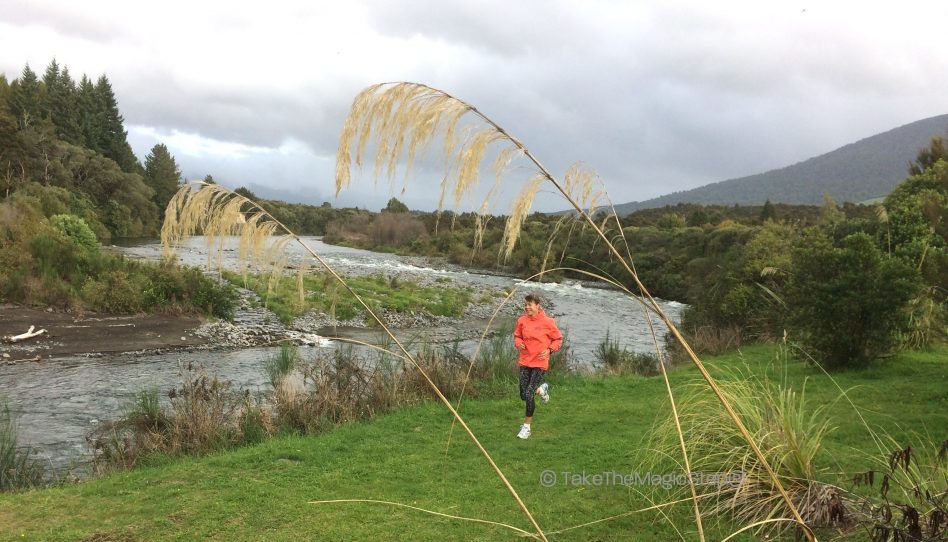Listen to Your Body — Stay Healthy and Injury-Free During Your Training
Dear Friends,
There are many ways to remain healthy while training, and most of the time we can succeed at this “healthy” game. An effective combination of a good diet, proper sleep, stretching exercises, different massages, the right equipment, and respecting the need for recovery to avoid overtraining is essential to achieve the best results. If you listen to your body and follow these important maintenance principles your journey of getting in shape will not just be easier but more rewarding as well.
With many marathon races approaching, my overall advice for you would be to please take extra special care of yourselves during the upcoming weeks.
Athletes have a higher risk of getting sick or injured during the end of the first build-up period of marathon preparation up until the end of the second build-up period. The latter is when you have your highest mileage and your longest runs. Many of you are experiencing that now. This propensity is due to the increased intensity, duration, and frequency of your workouts.
This is the time that you are pushing your body to new limits while the energy needs for your muscle cells are as high as ever during and after your training. Your immune system is being tested as well. And for many, training in winter conditions adds yet another challenging dimension.
If, for example, you are not able get proper sleep and you feel tired and weakened as a result, you will reduce the capability of your body to comfortably accept the workload you want it to successfully bear. You put yourself under stress and into a condition of “energy deficit,” with the risk of getting sick, injured or overtrained.
So, it is not just about how much you run. Rather, what is important is the combination of (1) the overall approach of your efforts in training and staying healthy and (2) listening to your body. It is this combination which will give you the best chance for optimum results.
Here are some guidelines on how you might achieve this. They will also help you to be what I like to call “TOP-FIT” on race day.
Listen to Your Body
When we work out and train to improve our fitness, our body has the wonderful ability to give us different signals about how it feels. It tells us when we are supporting it properly so it can perform in the way we would like it to, and it can give us timely guidance when further support is needed, for example, when it requires additional rest.
Learning to communicate with your body will help you get the most out of your training and all your efforts to achieve good results. But how can we listen cautiously? What can we do to communicate with our body before and while training? And how do we recognize the important signs our bodies are trying to give us?
First, focus on the following guidelines that will help you get into the habit of listening to your body. Take your time doing this. Once you incorporate the guidelines into your fitness and training routine, hopefully, they will be more than valued habits; rather, they will become trusted measures you reliably can count on for all your training. Later, I hope you will be able to develop a heightened sensitivity for evaluating even more signals. The ability to communicate with your body will give you the best chance to become an even better athlete.
- Listen to your body during the day, the hours, and even the last few minutes before your workout. Take the time to evaluate how you feel. Are you tired? Super-motivated? Sluggish? Focused? Feeling that something hurts? Be alert to those and any other signs you might get because being aware of them will determine how you approach your upcoming workout. They can help you train your workout as scheduled, slightly more aggressive, perhaps, or rather conservative, or adjusting to a different, less taxing training session. You might even decide on taking a rest day and re-schedule the workout altogether. Now, what you have achieved is that you trained most effectively for your condition on that particular day. In this situation, rest can be the most effective training. Rather than risk running on a tired body, you played it safe and went easy. You might even have avoided overtraining.
- Listen to your body, especially when it needs rest. Respect the necessity for and importance of recovery time. This follows from my two previous postings here on “Uta’s Insights,” in which I gave some general guidance about recovery and specific details for your “Recovery Weeks.” Please take special care of your body by giving yourself enough rest because the more you train, the more your body needs rest. I understand this is one of the toughest things to do but the benefits are extraordinary.Follow the concept of periodization and recover well before going into the next tempo workout or long run. This will allow your muscles to better adjust to the increased workload, and will guarantee a better-quality workout. Even during these hard weeks, adjust your schedule for recovery when needed by listening to your body. Also, follow a few weeks of hard training with an easy week to be well-prepared for the next hard training period. A typical plan would suggest having two or three weeks of harder training followed by one week of easy training—your “Recovery Week.”
- Start each of your long runs conservatively, with a good and relaxed feeling, and gradually move up in speed by running “Negative Splits.” This means you cover the second half of your chosen distance faster than the first half. The same principle applies to your interval programs, tempo runs, and easy runs. For example, start your interval programs moderately and finish them with your fastest repeats while still maintaining the same or even shorter rest periods in between each fast interval.Check the feedback your body is giving you during your workout. If you still feel strong at the halfway mark of your run or program, you can speed up. However, if you feel more tired than you expected at this point, and you are unable to run relaxed, modify your plan: try to stay with your current pace, keep your form, and see if you can finish your workout only slightly faster. Take note of how you felt, and adjust your speed and distance accordingly for your next similar workout.
- Take your pulse. When you are energized and training well, note your normal heart beats per minute when you wake up in the morning. Keep these measurements as your baseline. Then check your pulse in the morning on days when you are feeling tired or not as motivated and strong. If it is noticeably higher than normal, you might be overly tired from training too hard or you might be sick. Listen to this valuable signal your body is giving you, and make adjustments for your training. Even consider taking the day off. If your waking pulse in the mornings remains elevated, you might be experiencing overtraining. When this happens, it is best to pull back with some easy days of running. It also can be a sign of being sick, and if in addition you feel any symptoms, I would suggest to immediately check in with your physician.
In summary, analyzing how you feel on any particular day—before, during, and after your training—can give you important information about where you truly are in your training. Principles such as allowing enough recovery time, getting proper rest, following the principle of “Negative Splits,” and taking thoughtful measures when feeling tired and not fit, are great strategies you can use based on listening to your body.
And there is more we can listen to. For today’s message, I will share “Signs of Overtraining” as I did in one of my previous articles. Please always acknowledge how you feel, and try to evaluate your situation with care.
Signs of Overtraining
They include experiencing (1) an elevated resting pulse in the morning and elevated pulse during training and recovery after your workout, (2) a diminished ability to recover in general, (3) prolonged fatigue and higher muscle tightness than usual, (4) an inability to complete your workout, (5) a greater propensity of getting injured, (6) lower immune support, combined with an elevated risk for colds, (7) a decreased appetite, (8) a change in your sleeping pattern, (9) a lack of concentration, and (10) a sense of often feeling tired and overwhelmed.

Take your time and stay open to listening to your body. It can be a fun process as well as informational!
You might enjoy this communication with yourself even more while talking to your body, like I love to do. Sometimes my body feels tired, and my muscles are still a little tight and stiff from the previous workout, and my cells are begging for relief, pleading, “Please, run slowly today—stay at a comfortable, easy pace.” Little do they know that because I have listened to my body an easy jog is what I already had in mind and that they do not need to worry. And, as I run at a relaxed pace, I am telling my tired cells, “Little billions of guys, calm down, this is going to be an easy run for your best recovery.”
I will get back to you with this topic to explore more signs and further “communication ideas.” Best of all, listening to your body can give you overall strength and confidence—and the edge—to be the best you can be.
How to Support Your Body
Now, I would like to share with you a few of the many approaches you can take to support your body that will also help maintain your training schedule. They are great tools in conjunction with listening to your body.
Get help fast when you suspect that an injury or any other health problem might be developing. One of the toughest times we have to endure as athletes is getting through an injury. I hope you can stay injury-free—but if a problem occurs, react without delay and with a plan. Get an expert opinion quickly—now is not the time to wait. The sooner you get help, the faster you will be out on the road again—training and enjoying your sport. There are plenty of treatment suggestions for running-related injuries. Some injuries can be treated simply by icing and rest. But if your injury isn’t easily treated, seek help fast and immediately follow the suggestions of your health care professional, sports physician or orthopedist.
Out of many health related articles, I would like to suggest the following two—both written by Thomas Michaud, D.C. Tom is a successful chiropractor with whom I have worked since 1996. I met him when I was preparing for the Boston Marathon. “Managing Achilles Tendon Injuries” has good advice about how to handle this common injury. Another valuable source of information is “Treating the Painful Kneecap.” Naturally, I hope you don’t have to use this information to recover from an injury, but perhaps these articles could become part of your “running library”—and prove useful after the marathon as well.
Due to the intensity of marathon training, your body is more susceptible to getting a cold. I already shared a few thoughts at the beginning of this article. The information in the following article, “Conquering the Common Cold?”, can be helpful since it contains a few key points on how to strengthen the immune system—upon which your running currently is making so many demands.

You may want to consider adding light stretching to your training routine. Stretching lightly after your easy runs will help your muscles recover faster. It is best to stretch on “warmed-up” muscles—for example, after an easy workout or a warm bath. You can combine stretching with deep breathing. Please NEVER stretch after a hard workout when your muscles are still exhausted and tense from the workload or before a run when your muscles are cold. In addition, avoid putting pressure on your joints while stretching—instead, always keep a slight angle in the joint.
If you would like to read some research on stretching, see the following article “Stretching: The Truth” written by Thomas Michaud, D.C. And if you would like some stretching ideas, you may want to check out the following yoga exercises [known as “asanas”] in “Yoga for Performancesm: Introduction, Part 1, and Part 2,” which I enjoy practicing together with my fellow runners and friends new to yoga. I have collected the asanas with focus on complete muscle alignment, stronger ligaments, and greater flexibility for injury prevention especially for runners.
How about a massage? Enjoy a massage that will relax your muscles and help your body and mind recover from the rigors of training. The benefits of a relaxing sports massage are too awesome to write down in a few short points. If you would like more information you can take a look at the following article, “Hands-on Help.” Hopefully, the information will help you understand the benefits of Sports Massage as a real part of your training. Another massage therapy is “Lymphatic Massage.” You can find some information in the article “Lymphatic Massage: A Healing Therapy.”
Sleep to let your mind recover. I understand very well that you are busy with work, studies, family, travel, and other responsibilities. But sleep, rest, and recovery are essential to help you become “TOP-FIT” for your marathon and being able to train as effectively as possible.
Getting enough sleep will help you have a fresh mind and stay focused. The marathon is such a mental game: Play it strong! Give yourself the greatest chance you can to be mentally and physically at your best. Try to get as much sleep as possible from now until the marathon. A good night’s rest will help keep your immune system strong so you can avoid colds or other ailments. After intense or long workouts during your first and second build-up period—and later in your tapering period—when your entire body is in the recovery phase from your intense training load, it needs all the help it can get to return to optimum strength.
Be comfortable with your running equipment. This is a topic we will explore further in one of my future messages. But I wanted to add it here as well since it will help to support all your maintenance and training efforts and to stay healthy.
There is still enough time during your runs to check your shoes, socks, and other clothes you plan to wear on Race Day. The running shoes you wear in your marathon should not only be comfortable, but should have been tested during at least two of your long runs, some of your easy runs, and during one or two of your intense workouts.
Check the outsole, that is the material in direct contact with the ground, and also examine the midsole, which is the cushioning of your shoes. If they show cracks or fissures, it is time to switch to a new pair. If you have logged more than 600 miles in them—or 500 miles for certain lighter models—it is a good idea to change them.
Please, take time to break in new racing shoes. In one of my marathon runs, I wore relatively new shoes—and it was a big mistake. It was the only time I had to drop out of a race.
Also, on the day of your event it can be cold, warm, hot, sunny, windy, or wet. So be prepared!
Here is a link to information that might help you with clothing decisions for Race Day: “Two Days Before the Marathon.”
And finally, it is a good idea to “test run” not only your shoes and all of your equipment, but also the drinks and other sports nutrition you plan to consume before and during the marathon.
It would be best to do all this testing as soon as possible. I would not wait until the last week. By testing ahead, you will be at ease and well-prepared when you step up to the Starting Line.
Good luck with your fitness and training. I am thinking of you and hope you can stay healthy and injury-free.
Keep running,

Updated February 20, 2018
Updated February 17, 2014.
- Posted February 25, 2013
© Copyright 2013-2024 by Uta Pippig. All Rights Reserved.
More Insights

Uta’s Favorite Exercises to Improve Your Fitness and Running Technique
Uta Pippig has designed an at-home fitness program which only uses your own body weight, steps, and a Theraband. They are eight exercises that Uta often does herself.
Uta’s Yoga and Stabilization Guide for a Better Running Technique
Runners, especially, can benefit from a well-balanced yoga and stabilization program. Uta suggests effective combinations of poses and exercises that have helped her gain the flexibility and balance that can lead to a better running technique for everyone.
How a Clever Mental Focus Can Get You Through Running Injuries
Running injuries can be devastating, but learning to focus mentally can speed up the healing process. Uta explains how the forced break from running can actually provide future benefits.